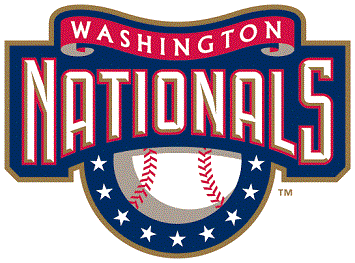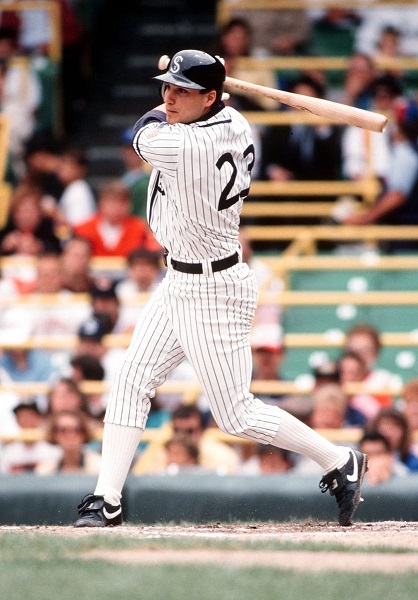 In 1929, uniform numbers appeared on the back of baseball jerseys for the first time, thanks to the Indians and the Yankees. By 1937, numbers finally appeared across all uniforms, both home and away, across both major leagues. Since that time, 81 distinct numbers have been worn by members of the White Sox, while the Cubs boast 76.
In 1929, uniform numbers appeared on the back of baseball jerseys for the first time, thanks to the Indians and the Yankees. By 1937, numbers finally appeared across all uniforms, both home and away, across both major leagues. Since that time, 81 distinct numbers have been worn by members of the White Sox, while the Cubs boast 76.
Today, we continue our look at those players, picking our favorite, if not the best, player to wear each uniform number for both Chicago teams with #1. 50 different players have donned #1 while playing in Chicago, 30 for the White Sox and 20 for the Cubs.
 Lance Johnson, along with Ricky Horton, was acquired by the White Sox from the Cardinals for Jose DeLeon just before spring training in 1988. Despite earning Most Valuable Player honors in the American Association the year before, Johnson struggled mightily after being given the starting center fielder job, hitting only .185 in 33 games before being sent back to the minor leagues. Johnson started at Triple A in 1988, before finally returning to the White Sox, and the major leagues, for good. In 1990, Johnson hit .285 and managed 36 stolen bases, despite leading the league with 22 caught stealings, and hit his first career home run all while patrolling centerfield for the final season at Comiskey Park.
Lance Johnson, along with Ricky Horton, was acquired by the White Sox from the Cardinals for Jose DeLeon just before spring training in 1988. Despite earning Most Valuable Player honors in the American Association the year before, Johnson struggled mightily after being given the starting center fielder job, hitting only .185 in 33 games before being sent back to the minor leagues. Johnson started at Triple A in 1988, before finally returning to the White Sox, and the major leagues, for good. In 1990, Johnson hit .285 and managed 36 stolen bases, despite leading the league with 22 caught stealings, and hit his first career home run all while patrolling centerfield for the final season at Comiskey Park.
As the team moved across the street in 1991, Johnson continued his steady presence in the lineup, hitting .274 while stealing 26 bases and hitting 13 triples, leading the American League. Johnson hit .279 in 1992, with another 12 triples, leading the league again, and 41 stolen bases while setting a new career high with 3 home runs. 1993 saw Johnson and the White Sox finally put everything together. Johnson raised his average to .311, hitting 14 triples and stealing 35 bases while the White Sox won their first divisional title in a decade. Unfortunately, Johnson struggled in the ALCS against the Blue Jays, hitting only .217 in the 6 game series, though knocking in 6 runs and hitting his only home run of the season.
The strike-shortened 1994 season cut down what could have been a tremendous season for Johnson. He again hit 14 triples, but in only 106 games, becoming the first player in Major League history to lead the league for four consecutive seasons. When baseball resumed in 1995, Johnson turned in his finest season in a White Sox uniform. He hit .306 and set a career high with a .766 OPS. He led the league in at bats and hits, though he saw his streak of triples crowns end despite hitting a solid 12. He set a career high with 10 home runs, 3 more than his previous career total. On September 23, he became the first White Sox hitter to get 6 hits in a game since Floyd Robinson in 1962. Following the season, he became a free agent and his White Sox career came to an end.
On the north side of town, Doug Glanville wore #1 when he made his major league debut for the Cubs in 1996, posting a .241 average over 49 games. He became a full time presence for the Cubs in 1997, primarily in left field, hitting .300 and swiping 19 bases. He switched from #1 to #8 at the end of August when, ironically, the Cubs acquired Lance Johnson from the Mets.










